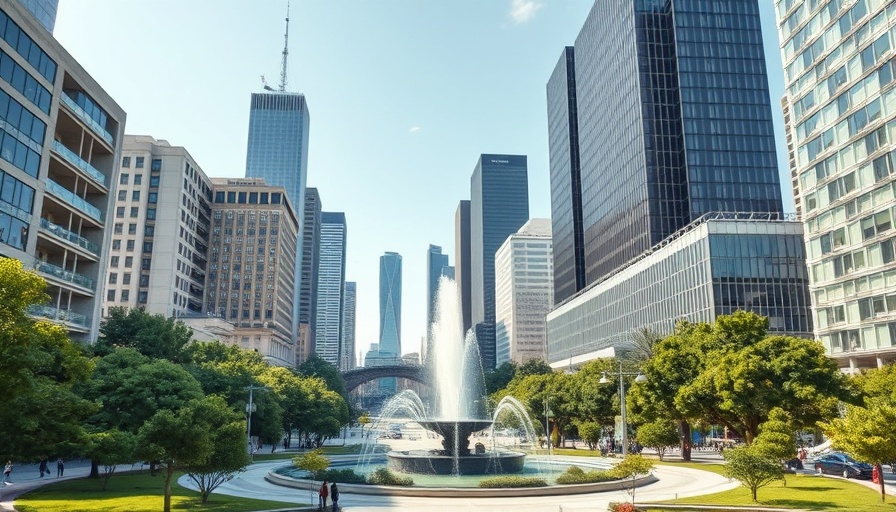
Reimagining Retail Space: An Architectural Marvel
In the heart of New York City, the historic One Wall Street meets contemporary design in a remarkable transformation led by Laura Gonzalez for the flagship Printemps. The reinvention embodies a focus on creativity, sustainability, and practicality, catering to the modern lifestyle of digital nomads who value comfort and efficiency. This vital shift is more than just aesthetic; it reflects a larger cultural narrative on how we approach spaces we inhabit.
Innovative Design With Purpose: The Workhorse of Modern Spaces
Printemps New York spans an impressive 55,000 square feet, breaking traditional retail boundaries by incorporating functional areas such as multiple bars and a fine dining restaurant. For digital nomads, this offers inspiration on integrating work and leisure spaces in their own environments. Gonzalez’s design features upcycled materials—such as tabletops made from compressed recycled plastics—illustrating how sustainability complements comfort and convenience.
A Journey Through Space: Navigating the Experience
The layout of Printemps New York is intentionally curated to guide visitors through various shopping experiences, which can inspire how remote workers design their workspace routes. Walking through ten distinct spaces, visitors flow seamlessly from one area to the next, emphasizing the importance of movement and exploration. This design philosophy can be adapted by nomads in their workspaces to create a natural flow that promotes productivity and creativity.
The Benefits of Upcycled and Ecological Materials
Laura Gonzalez’s commitment to using all-upcycled elements highlights a growing trend towards eco-friendliness in design, which is as valuable in residential and workplace interiors. The floral installations made from plant-based resin draw attention to the potential of decorative elements being both aesthetically pleasing and environmentally responsible. Digital nomads can take cues from this approach, utilizing sustainable materials to enhance their workspace's look and feel without compromising functionality.
Incorporating Ergonometric Elements in Everyday Spaces
Ergonomics plays a key role in creating efficient workspaces. Gonzalez’s design incorporates various textures and materials that not only captivate the eye but also support physical comfort—a crucial consideration for those spending hours at their desks. By prioritizing humano-centric design, Gonzalez sets a precedent for creating workspaces that keep comfort, functionality, and health at the forefront.
A Culinary Exploration: Integrating Wellness into Workspace Design
The integration of culinary spaces, such as coffee bars and dining areas within Printemps, illustrates the importance of wellness and social connection in any work environment. Similarly, for digital nomads, designing a workspace that includes areas for relaxation and nourishment can enhance productivity and mental health. Consider adding a dedicated coffee nook or a lunch space in your home office that encourages breaks and social interaction.
Cultural Context: How Space Reflects Changing Lifestyles
The transformation of One Wall Street into a multifunctional hub illustrates broader societal shifts in how we view urban environments. As more individuals adopt remote work and digital nomad lifestyles, the importance of adaptable, multifunctional spaces becomes even clearer. This cultural evolution prompts a reevaluation of our physical surroundings and their impact on our productivity and wellbeing.
Printemps New York goes beyond being merely a retail space; it is a multifaceted experience that aspires to redefine modern living and working. By drawing on Laura Gonzalez's innovative design approaches, digital nomads can create their own comfortable and efficient remote work environments.
Call to Action
Feeling inspired by Laura Gonzalez’s approach to redefining spaces? Start rethinking your own workspace to enhance comfort, sustainability, and practicality—after all, your environment plays a significant role in your productivity and wellbeing. Consider how integrating elements of ergonomic design can lead to a more enjoyable work-life experience.
 Add Row
Add Row  Add
Add 




Write A Comment